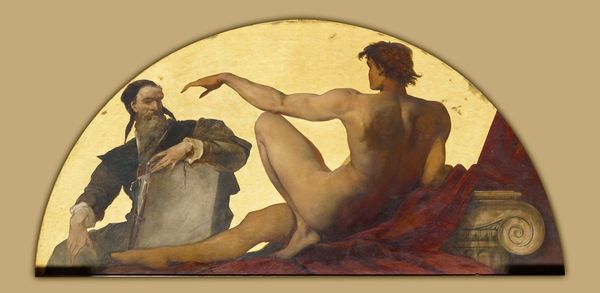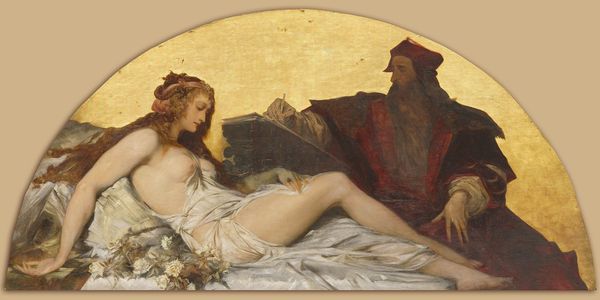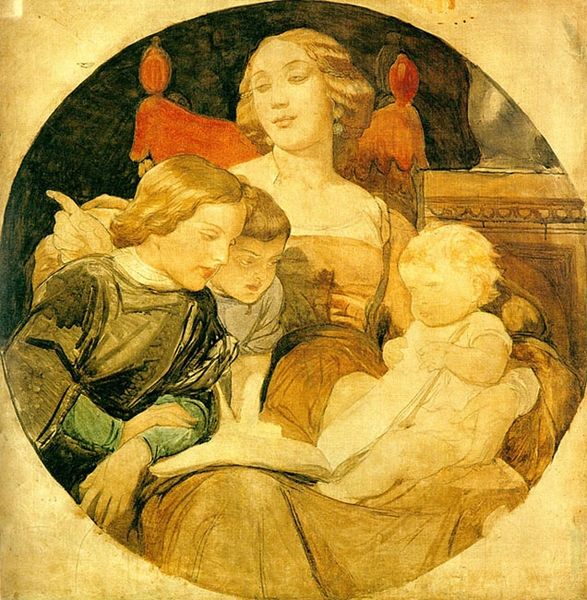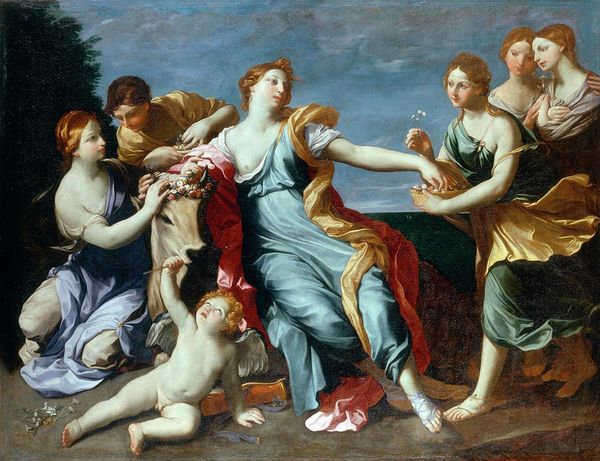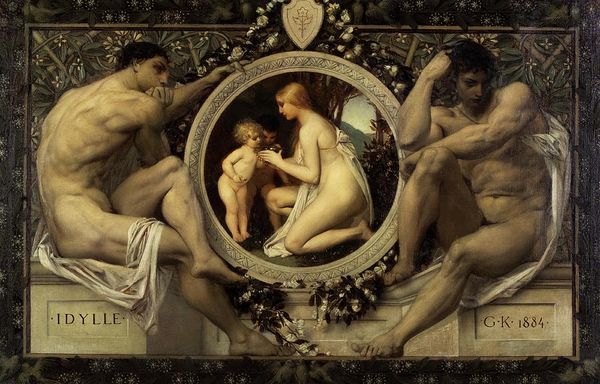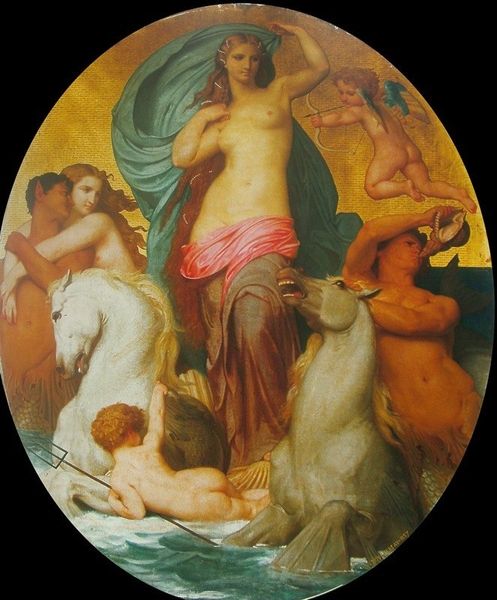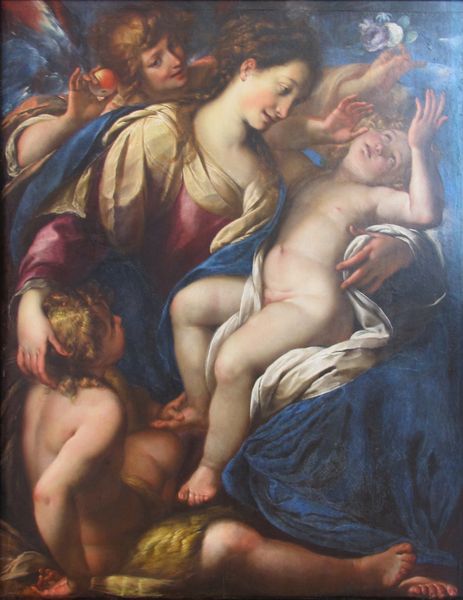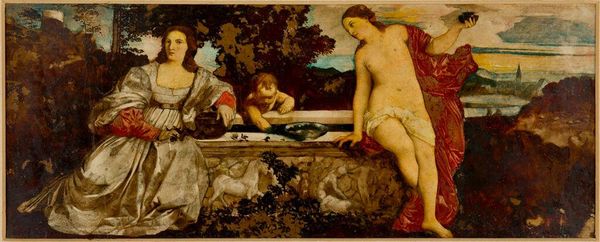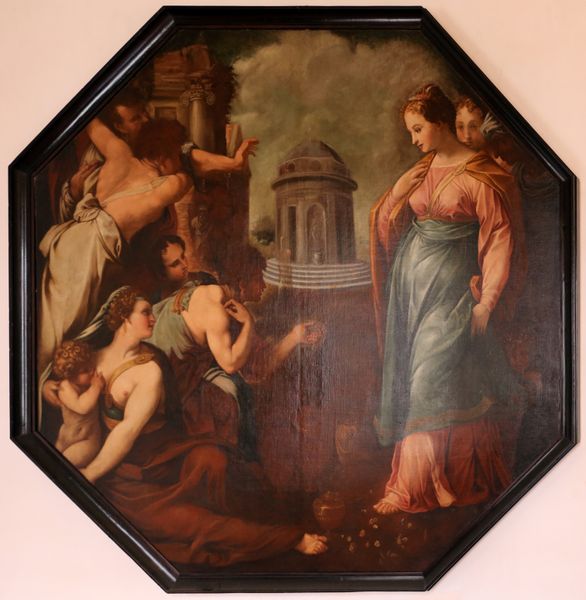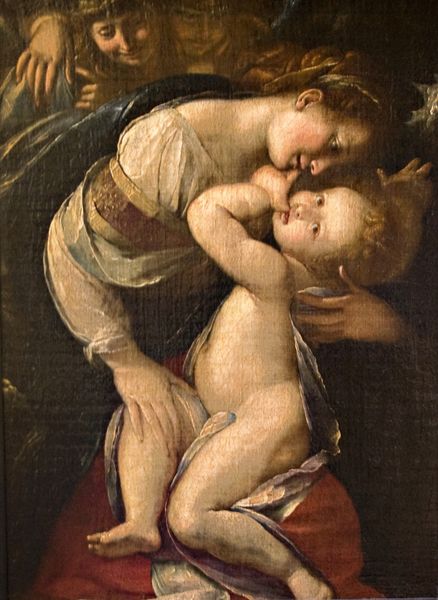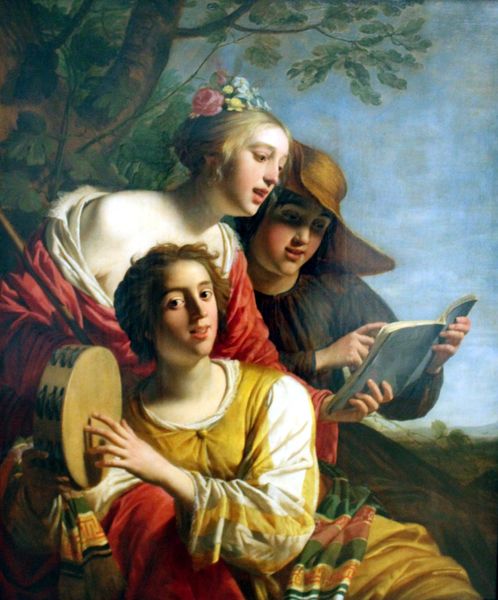
Copyright: Public Domain: Artvee
Editor: Here we have Hans Makart's "Raphael," painted between 1881 and 1884, crafted with oil paint. It’s a rather idealized image, almost dreamlike in its depiction of the artist, his muse, and child. How might we interpret this work considering its materials and context? Curator: From a materialist perspective, consider the opulence of oil paint itself during this period. Its capacity for rich color and smooth blending created illusions of wealth and idealized beauty, feeding into a specific kind of consumer desire. How does this materiality itself construct or reinforce Raphael’s legacy? Editor: So the very act of painting in oil, given its associations with the upper class, contributed to the romanticizing of Raphael? Curator: Exactly. Makart is not just representing Raphael; he’s participating in a cultural construction. Consider too the gold leaf backdrop; it's less about divinity here, but more about constructing and solidifying this opulent historical narrative for Makart's contemporaries. Is the application of gold also influencing perception here? How? Editor: The gold certainly elevates it, imbuing the scene with a sense of timelessness and value. It moves it away from mere portraiture and toward something more…iconic, perhaps. But wouldn’t that contradict our Materialist interpretation? Isn’t this elevating "high art" in a traditional manner? Curator: Not necessarily. We’re not dismissing "high art" as much as interrogating *how* its meaning is produced and circulated through the very materials and modes of production that sustain it. By emphasizing materials and methods we're acknowledging those power dynamics involved with creating and sustaining those concepts and "truths". Editor: That makes much more sense. So we’re analyzing the means of production to understand the broader cultural significance of the artwork itself. Curator: Precisely. The painting becomes less about Raphael the individual and more about the construction of artistic genius through materials, display, and consumption. Editor: I never thought about it that way, breaking down even "high art" like that. It gives us a whole new layer to think about, especially the power structures inherent within seemingly beautiful objects.
Comments
No comments
Be the first to comment and join the conversation on the ultimate creative platform.
